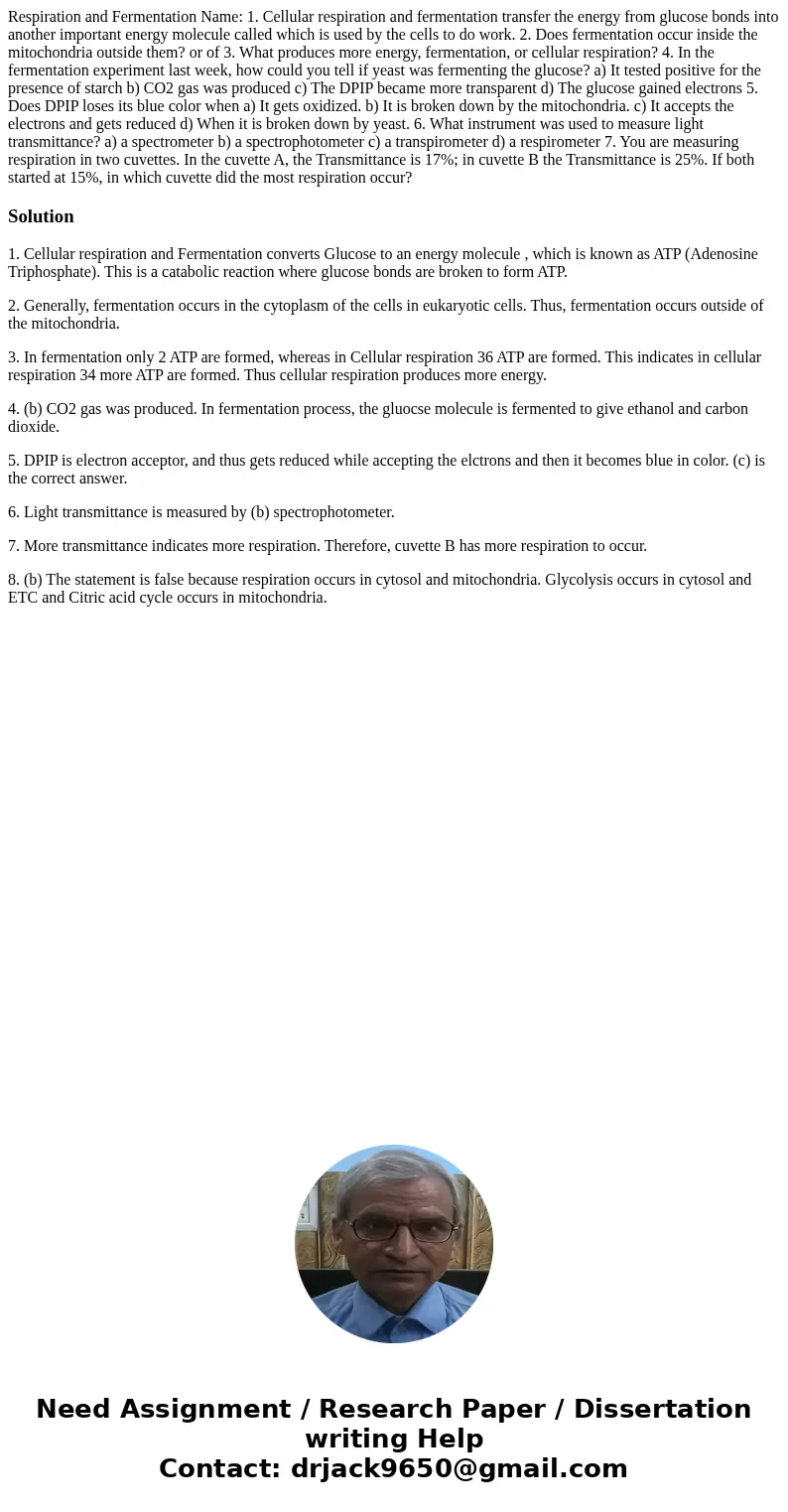Respiration and Fermentation Name 1 Cellular respiration and
Solution
1. Cellular respiration and Fermentation converts Glucose to an energy molecule , which is known as ATP (Adenosine Triphosphate). This is a catabolic reaction where glucose bonds are broken to form ATP.
2. Generally, fermentation occurs in the cytoplasm of the cells in eukaryotic cells. Thus, fermentation occurs outside of the mitochondria.
3. In fermentation only 2 ATP are formed, whereas in Cellular respiration 36 ATP are formed. This indicates in cellular respiration 34 more ATP are formed. Thus cellular respiration produces more energy.
4. (b) CO2 gas was produced. In fermentation process, the gluocse molecule is fermented to give ethanol and carbon dioxide.
5. DPIP is electron acceptor, and thus gets reduced while accepting the elctrons and then it becomes blue in color. (c) is the correct answer.
6. Light transmittance is measured by (b) spectrophotometer.
7. More transmittance indicates more respiration. Therefore, cuvette B has more respiration to occur.
8. (b) The statement is false because respiration occurs in cytosol and mitochondria. Glycolysis occurs in cytosol and ETC and Citric acid cycle occurs in mitochondria.

 Homework Sourse
Homework Sourse